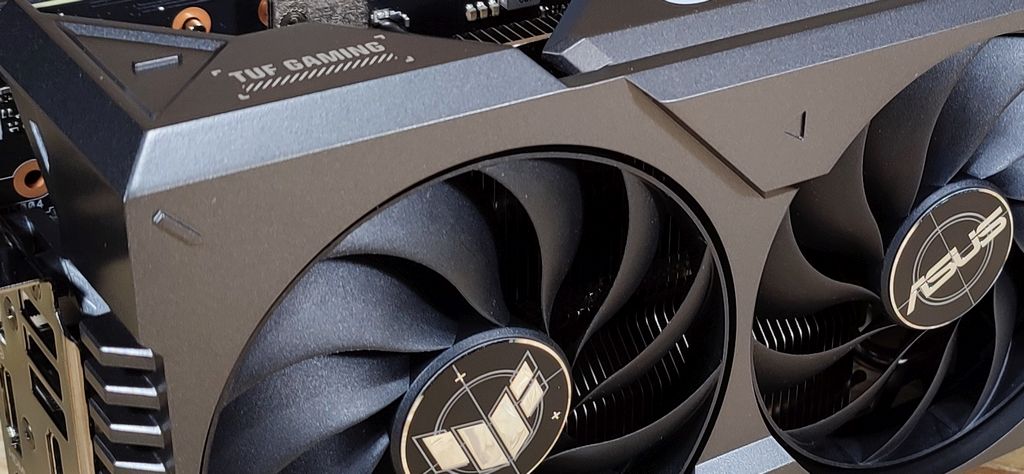Demystifying Ti in Graphics Cards: An Ultimate Guide

Modern computing relies heavily on graphics cards, which enable everything from video games to professional design work. When shopping for a graphics card or researching GPUs (Graphics Processing Units), you may find the term “Ti” in model names. But what exactly does “Ti” mean in the context of GPUs and graphics cards? In this guide, we’ll discuss the importance and advantages of Ti GPUs and compare them to non-Ti versions.
Table of Contents
Understanding Graphics Cards and GPUs
To fully comprehend Ti GPUs, it’s important to first understand graphics cards and GPUs. A graphics card, also known as a GPU card or video card, is a hardware component that enables your computer to display images, videos, and animations on your monitor. Its main purpose is to handle graphics rendering, which reduces the strain on the CPU (Central Processing Unit). This is especially important for tasks that demand high-quality visuals, like gaming and video editing.
GPUs (Graphics Processing Units): GPUs are specialized processors designed to rapidly manipulate and render images and videos. They consist of thousands of tiny processing cores that can handle parallel tasks efficiently. While initially developed for graphics rendering, modern GPUs are versatile and used in various applications, including machine learning and scientific simulations.
What Does “Ti” Mean in GPU?
Now that we have a basic understanding of graphics cards and GPUs let’s address the question: What does Ti mean in GPU?
“Ti” is a suffix used by NVIDIA, one of the leading manufacturers of graphics cards, to denote a higher-performing and enhanced version of a specific GPU model. It signifies that the Ti variant offers better performance and features than its non-Ti counterpart.
Why Ti Matters in Graphics Cards
Understanding why Ti matters in graphics cards, and what does Ti mean in graphics cards, is essential for anyone looking to make an informed GPU purchase. Here are some reasons why Ti GPUs are significant:
Enhanced Performance
One of the primary reasons Ti GPUs matter is their significant performance boost. Ti variants are engineered to deliver higher frame rates, smoother gaming experiences, and the ability to handle more demanding tasks. Whether you’re a gamer, content creator, or professional designer, the improved performance of Ti GPUs can make a noticeable difference in your work or play.
Advanced Features
Ti GPUs often have additional features and technology enhancements that elevate your computing experience. These enhancements may include better cooling solutions, increased VRAM (video RAM) capacity, and advanced ray tracing capabilities. These features contribute to improved visuals, smoother gameplay, and support for cutting-edge technologies.
Future-Proofing
Investing in a Ti GPU can provide a degree of future-proofing for your system. These GPUs can easily handle the latest games and software updates, ensuring that your PC remains relevant for a more extended period. A Ti GPU can be a wise choice if you want to avoid frequent upgrades.
Ti GPUs vs. Non-Ti GPUs: How They Compare
To truly appreciate the significance of Ti GPUs, it’s essential to compare them to their non-Ti counterparts. Let’s explore the key differences:
Performance Difference
The most significant difference between Ti and non-Ti GPUs is performance. Ti GPUs typically outperform their non-Ti counterparts in terms of raw processing power. This superior performance translates into higher frame rates in games, faster rendering in content creation applications, and smoother multitasking capabilities.
Feature Enhancements
Ti GPUs often have additional features and technology enhancements that improve your computing experience. For example, they may have better cooling solutions, enabling quieter and more efficient operation. Additionally, Ti GPUs may have higher VRAM capacity, allowing for smoother gameplay at higher resolutions.
Price Considerations
It’s important to note that Ti GPUs come at a higher price point compared to their non-Ti counterparts. The enhanced performance and features justify this price difference for many users, especially those who demand top-tier performance and the latest technologies. However, budget-conscious users may need to weigh the performance gains against their budget limitations.
Benefits of Ti GPUs
Now that we’ve explored the differences let’s highlight the benefits of choosing a Ti GPU:
Superior Gaming Performance
For gamers, Ti GPUs are a dream come true. They are engineered to deliver the highest frame rates and image quality, ensuring that even the most demanding games run smoothly and look stunning. If you’re passionate about gaming and want the best possible experience, a Ti GPU is an excellent choice.
Enhanced 3D Rendering and Content Creation
Content creators who work with 3D modeling, video editing, and graphic design can benefit significantly from the enhanced performance of Ti GPUs. These GPUs render complex scenes, reduce rendering times, and improve workflow efficiency. Whether editing videos or designing 3D models, a Ti GPU can streamline your creative process.
Ray Tracing Excellence
Many Ti GPUs come equipped with advanced ray tracing technology. Ray tracing enables realistic lighting, reflections, and shadows in supported games and applications. This technology enhances visual fidelity and immersion, making your gaming and content creation experiences more lifelike and engaging.
Future-Proofing Your System
Investing in a Ti GPU is a form of future-proofing your system. These GPUs can easily handle upcoming game titles and software updates, delaying the need for system upgrades. A Ti GPU can be a valuable addition if you want to ensure that your PC can run the latest software for years.
When to Choose a Ti GPU
Choosing a Ti GPU should align with your specific needs and priorities. Here are scenarios where opting for a Ti GPU makes sense:
Gaming Enthusiasts
If you’re a passionate gamer who demands the highest frame rates, detailed graphics, and ray-tracing capabilities, a Ti GPU is an excellent choice. These GPUs are designed to provide an exceptional gaming experience and can handle the most demanding game titles.
Content Creators
Content creators who engage in 3D rendering, video editing, graphic design, and other graphics-intensive tasks can benefit immensely from the enhanced performance of Ti GPUs. These GPUs reduce rendering times, improve workflow efficiency, and ensure smooth multitasking when working with resource-intensive applications.
Future-Proofing Your System
A Ti GPU is a wise investment if you want to future-proof your system and avoid frequent upgrades. These GPUs can handle upcoming game titles and software updates, ensuring that your PC remains relevant for an extended period.
Competitive Gamers
Competitive gamers who rely on split-second reactions and precise gameplay will appreciate a Ti GPU’s extra power and responsiveness. Higher frame rates and smoother gameplay can give you a competitive edge in online gaming.
Different Types of Ti GPUs
Ti GPUs are available in various models and series, catering to diverse user needs and budgets. Let’s explore some different types of Ti GPUs:
Ti Variants by Series
Ti GPUs are available across NVIDIA’s various series, including the GeForce GTX and GeForce RTX series. Each series offers different performance levels and features, allowing users to choose a GPU that suits their requirements.
Ti GPUs by Model
Every series has various Ti GPU models, each with unique specifications and capabilities. They are typically identified by numbers like the GeForce RTX 3080 Ti or the GeForce GTX 1660 Ti. Choosing the model that fits your performance requirements and budget is essential.






